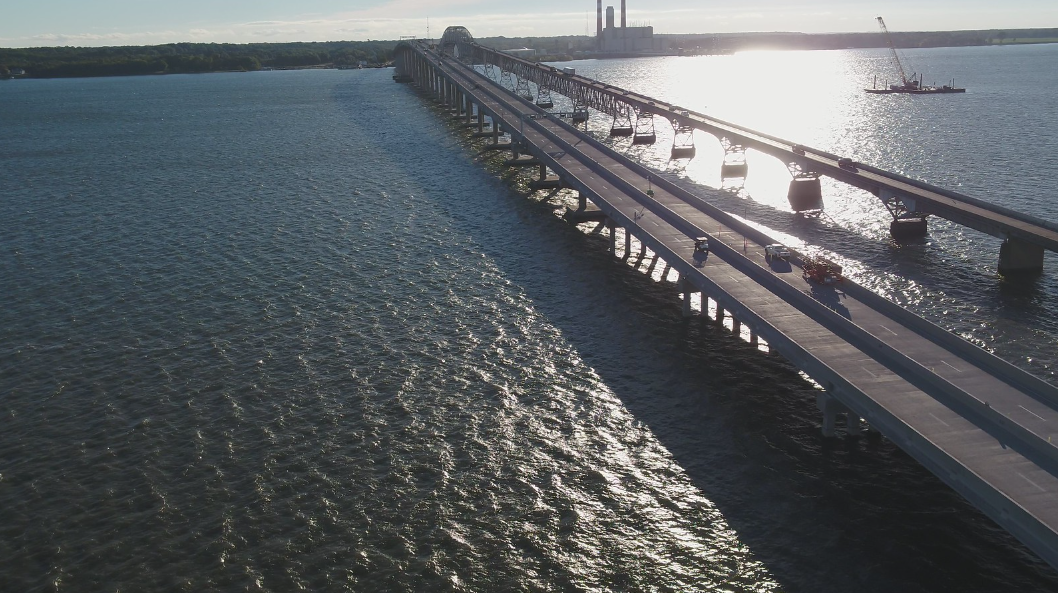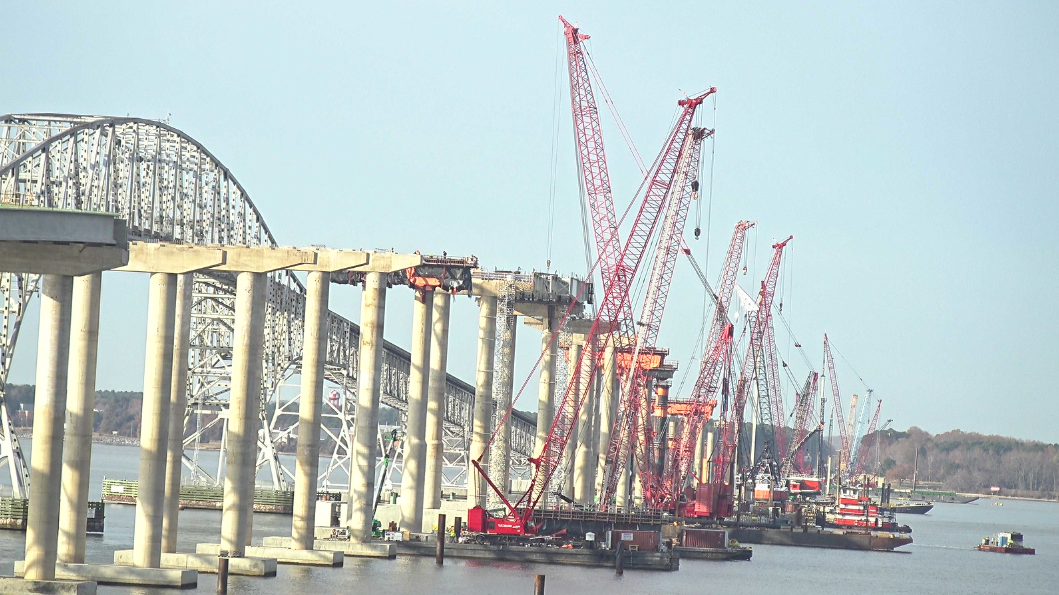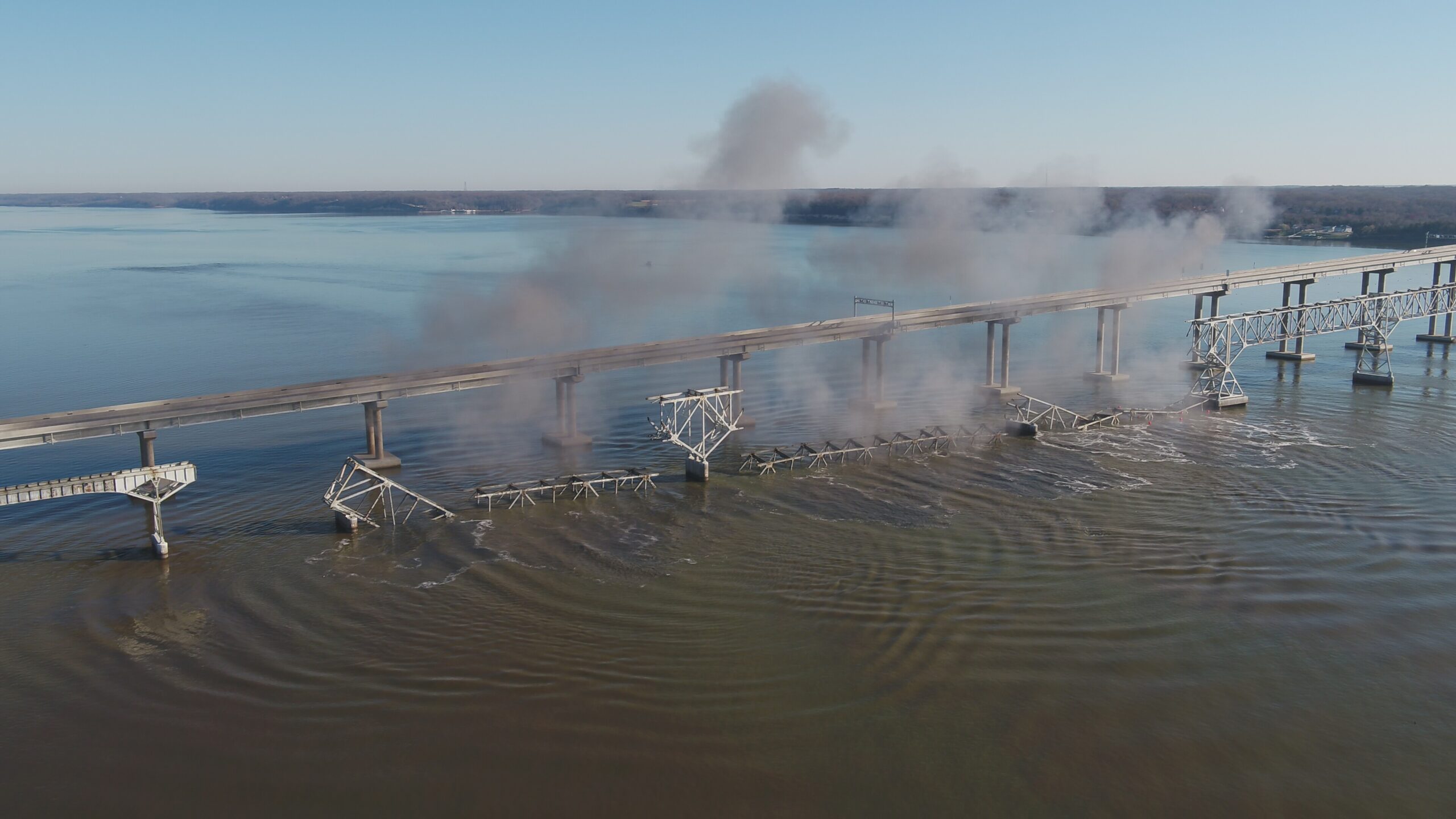The Old Bridge and the Reef: Skanska Leading the Charge with Environmental Restoration and Sustainability
By Thomas J. Fulton, Senior Vice President of Operations at Skanska
In late 2022, the ribbon was cut on the new four-lane Harry W. Nice Memorial/Senator Thomas “Mac” Middleton Bridge, a remarkable infrastructure project that not only improves mobility and safety but also sets an example of important environmental restoration and sustainability efforts in the Potomac River region. The project, connecting Newburg, Maryland, and Dahlgren, Virginia, has redefined transportation and environmental conservation. Skanska, a global development and construction company, has been at the forefront of this remarkable endeavor.
This joint venture of Skanska, Corman Kokosing Construction Company, and McLean Contracting Company has demonstrated their commitment to sustainable practices and the preservation of the local ecosystem. A standout feature of this project is the innovative repurposing of materials from the old bridge, showcasing Skanska’s dedication to sustainability. Approximately 9,500 tons of concrete from the 80-year-old bridge are being used to create an artificial reef site, providing essential habitat and shelter for a wide variety of marine species, including striped bass, bluefish, and oysters.
The initiative highlights the careful planning and resourcefulness of the construction team, demonstrating the possibilities of transforming a demolition site into enhancements for the ecosystem. Not only does this reduce the environmental impact of the project, but also showcases the importance of responsible construction practices when dealing with the effects of infrastructure construction on the environment.
The decision to utilize the old bridge’s concrete as the foundation for these sanctuaries demonstrates a unique approach to environmental restoration and sustainability. By reimagining construction demolition, this joint venture has contributed to the expansion of marine habitats, which play a vital role in the health and diversity of the local ecosystem. The artificial reef site will create a thriving marine environment that benefits the surrounding area and the Potomac River.
Additionally, the project emphasizes its commitment to sustainability by partnering with the state of Maryland and the Potomac River Fisheries Commission to plant nearly 12 million live oysters. Each of these oysters has the potential to filter approximately 50 gallons of water per day, a sustainable approach that promotes cleaner water.

Demolition and Repurposing
One of the most remarkable aspects of the Nice-Middleton Bridge project is the creative approach to bridge demolition and materials repurposing. The old bridge, spanning the Potomac River, presented a unique opportunity to reuse its materials, which reduced waste and environmental impact. Skanska and its partners undertook a careful and controlled demolition process using a combination of mechanical and controlled blast demolition techniques.
The concrete from the old bridge was then loaded onto barges and transported to an artificial reef site, which was designed to provide a suitable habitat for a wide range of fish and invertebrates. In total, approximately 9,500 tons of old bridge materials were repurposed to enhance these habitats, promoting biodiversity and the ecological health of the Potomac River.
In a similar fashion to these recycling efforts, a precedent was set for repurposing materials from aging infrastructure with the former Woodrow Wilson Bridge in 2006. The bridge, which was constructed in 1961, underwent demolition as part of a new bridge construction project. Concrete materials from the old Woodrow Wilson Bridge were recycled to create five major fish reefs in the Chesapeake Bay and the Potomac River.

Approximately 59,000 metric tons of materials were repurposed, setting the stage for a vibrant marine habitat. Today, grouper, black sea bass, crabs, oysters and myriad colonizing invertebrates can be found on the Wilson bridge material. This exemplifies how sustainable construction practices can have a lasting impact on the environment, a principle that is shared in the Nice-Middleton Bridge project.
Skanska’s joint venture committed to recycling 100% of the steel from the old bridge, further demonstrating their dedication to minimizing environmental impact. This approach to construction waste management serves as an excellent model for future infrastructure projects, showcasing the potential for sustainable construction practices.
A Bridge to a Sustainable Future
The new Harry W. Nice Memorial/Senator Thomas “Mac” Middleton Bridge, which opened on October 12, 2022, is a testament to the positive impact of innovative engineering and sustainability. This modern infrastructure marvel addresses several crucial aspects of transportation and environmental conservation in the region.
It eases traffic congestion by doubling the vehicle capacity with four 12-foot-wide lanes, a significant improvement over the old bridge’s two 11-foot-wide lanes. This enhancement not only streamlines transportation but also contributes to reduced greenhouse gas emissions by reducing traffic bottlenecks.
Safety was another primary concern for the project. The new bridge features a barrier-separated median between east- and westbound lanes, two-foot shoulders, and other safety improvements that meet current standards. By eliminating lane-shifting issues at toll booths with all-electronic tolling, this new bridge enhances the safety of all commuters.
An additional benefit to the bridge is its impressive 135-foot clearance, which allows tall ships to pass beneath it. This feature supports the maritime industry and regional commerce while ensuring a seamless flow of transportation both on and beneath the Potomac River.
Notably, the project also generated over 500 local job opportunities, providing economic benefits to the region. The bridge is designed to have a remarkable 100-year service life, emphasizing the enduring legacy of this infrastructure for generations to come.

Skanska has long been at the forefront of sustainable and innovative construction practices. Their involvement in the Nice-Middleton Bridge project highlights their commitment to pushing the boundaries of environmentally responsible construction. With over 135 years of experience, Skanska has not only left a significant mark on the construction industry but has also prioritized sustainable and innovative solutions.
source https://csengineermag.com/the-old-bridge-and-the-reef-skanska-leading-the-charge-with-environmental-restoration-and-sustainability/
تعليقات
إرسال تعليق